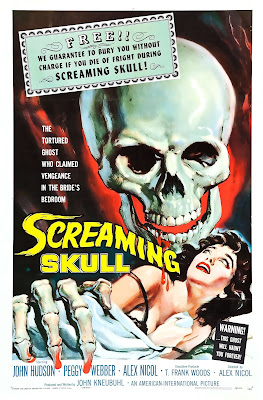Copyright 2019 by Gary L. Pullman
Like
any other artist, Rene Magritte makes use of a variety of techniques
to create his effects. Several of the more common of Magritte’s
techniques include—
Personal
Values
—incongruous
juxtaposition: disparate objects are placed side by side
or together. Example: the comb, bed, mach, rug, glass, shaving brush,
wardrobe, cushion, room, and sky in Personal Values.
Memory
of a Voyage
—diffusion:
a quality or condition is allowed, as it were, to spread throughout a
scene or a setting. Example: stone permeates Memory of a Voyage.
The
Magician
—multiplication:
a single attribute or feature is multiplied. Example: the arms of the
diner in The Magician.
Carte
Blanche
—fragmentation:
a figure or an object is fragmented in some manner. Example: the
horsewoman in Carte Blanche.
Dangerous
Relations
—reversal:
the ordinary nature or appearance of a person, place, or thing is
reversed or partially reversed. Example: the figure of the nude
woman whose back and buttocks appear in the mirror she holds in front
of herself in Dangerous Relations.
Philosophy
in the Boudoir
—personification:
human traits are applied to inanimate objects or animals. Example:
the nightgown with breasts and the high-heeled shoes with veins and
painted toenails in Philosophy in the Boudoir.
The
Heart of the World
—substitution:
one thing is substituted for another. Examples: the substitution of a
tower for a unicorn’s horn in The Heart of the World and of
a floating balloon for a man’s head in The Art of Living.
The
Lost Jockey
—synecdoche:
a part stands for a whole. Example: the leaf-trees in The Lost
Jockey.
The
Seducer
—environmental influence: an object partakes of the nature of its surroundings. Example: the ship in The Seducer literally becomes one with the sea.
Treasure
Island
—hybridization:
two or more persons, places, or things are combined. Examples: In
Treasure Island, The Natural Graces, The Companions of
Fear, and The Third Dimension, birds merge with plants,
the animal with the vegetable, the aerial with the terrestrial, and
the mobile with the stationary.
The
Human Condition
—overlapping:
a “nearer” object partly covers a more “distant” object.
Example: The Human Condition.
The
Domain of Arnheim
—metaphor:
this equals that. Example: In The Domain of Arnheim, an eagle
is a mountain.
The
Collective Imagination
The
Alarm Clock
—inversion:
a familiar object is inverted (turned upside down, inside out, or
otherwise reversed. Examples: The Collective Imagination and
The Alarm Clock.
The
Eternal Evidence
—compartmentalization:
an object is divided into several sections or boxes. Example: The
Eternal Evidence.
—subtraction
or omission: one or
more attributes or features is (are) removed or left out. Example:
The Horns of Desire (no picture available).
The
Wrath of the Gods
—punning:
a play on words is used as the basis for the picture. Example:
“horsepower” seems to have inspired The Wrath of the Gods.
The
Lovers
—concealment:
one or more attributes or features is (are) hidden. Example: The
Lovers.
The
Listening Room
The
Tomb of the Wrestlers
—magnification:
an object’s size is increased to gigantic proportions. Examples:
the immense apple in The Listening Room and the enormous rose
in The Tomb of the Wrestlers.
The
Great War
—displacement:
an object is relocated to a place other than its customary location.
Example: the corsage in The Great War appears before the
woman‘s face rather than on her gown.
Clairvoyance
—clairvoyance:
anticipating the future. Example: the artist, studying an egg, paints
a bird in flight in Clairvoyance.
Variation
of Sadness
—irony:
the conveyance of an unanticipated meaning or a meaning at odds with
or opposite to its literal meaning. Example: Variation of Sadness,
in which a hen contemplates a boiled egg.
The
Beautiful Relations
—borrowed
capabilities: by being associated with other ob jects that
can do something, one that cannot do the same feat seems to borrow
the capability to do so. Example: In The Beautiful Relations,
facial features float alongside a hot-air balloon that hovers where
the left eye should be.
The
Imaginative Faculty
—symbolism:
a symbol is used as the basis of the picture. Example: the phallic
candle and testicular eggs in The Imaginative Faculty.
The
Large Family
High
Society
—silhouetting:
a silhouette shape is cut out of the background or the foreground of
the painting. Examples: the bird in The Large Family and the
man’s shape in high Society.
The
Rape
—transformation:
one object turns into (becomes) another object. Example: a torso
becomes a face in The Rape.
The
Reckless Sleeper
—embedding:
objects are implanted in a surface of another object. Example: The
Reckless Sleeper.
Intermission
—truncation:
an object is pruned, trimmed, or amputated. Example: the disembodied
limbs in Intermission.
Attempting
the Impossible
Alice
in Wonderland
—allusion:
a reference to a literary or other cultural predecessor is used as
the basis of the picture. Examples: the Pygmalion myth seems to have
inspired Attempting the Impossible and Lewis Carroll’s novel
appears to be the inspiration for Alice in Wonderland.
Delusions
of Grandeur
Megalomania
—telescoping:
an object is telescoped outward or inward or is depicted with the
capability of being so manipulated. Examples: Delusions of
Grandeur and Megalomania.
The
Six Elements
—combination:
two or more of the single techniques are used together. Example: The
Six Elements employs incongruous juxtaposition,
compartmentalization, and truncation.
The
Harvest
—impressionism:
the use of heavy brushstrokes, vivid color, and other techniques to
create a sense of mood or atmosphere concerning a painting’s
subject. Magritte said he employed the surrealistic technique to
create “a feeling of levity, intoxication,” and “happiness”
while also creating “a feeling of the mysterious existence of
objects (Letter to G. Puel date march 8, 1955, reprinted in Magritte:
The True Art of Painting by Harry Torczyner “with the
collaboration of Bella Bessard, Abradale Press/Harry N. Abrams, Inc,
New York, NY, 1979, 107).
—variation:
various conceptions of a theme are repeated over a span of time—often
several years or decades. Examples: Magritte painted several versions
of a number of his paintings or alternative versions of them or of
certain motifs in his work. For example, the depiction of a leaf as
comprising a tree (see “synecdoche”) is a frequently repeated
motif in Magritte’s oeuvre, as is his hybridization of birds
and plants.
The
Perspective of Love
The
Fire
The
Air Plane
The
Lost Jockey
The
Ignorant Fairy (1957)
The
Ignorant Fairy (1957)
The
Companions of Fear
The
Natural Graces
Treasure
Island
The
Flavor of Tears
The
Enchanted Realm (1953)








































































